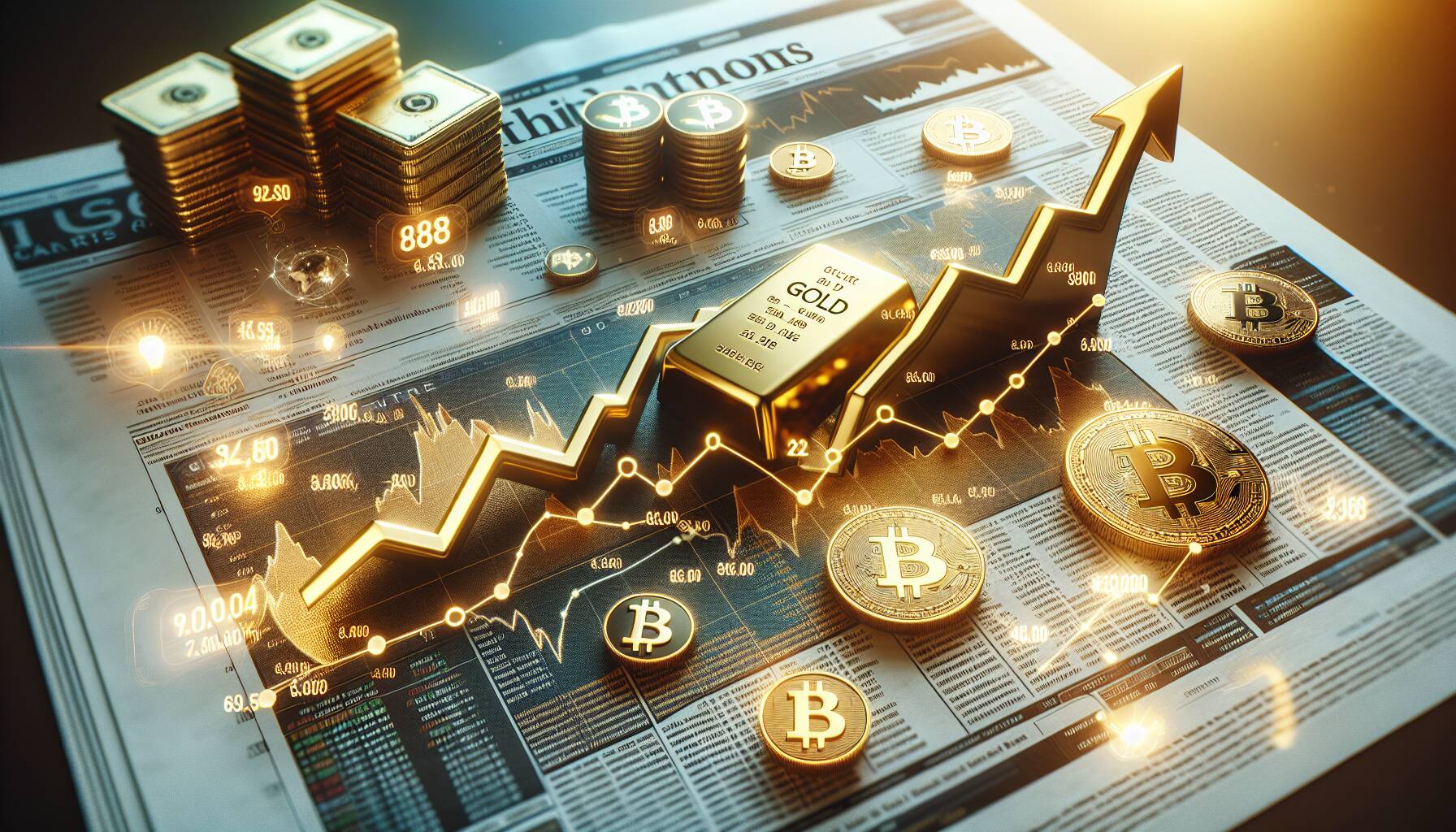Gold (XAU) is making headlines as it reaches its highest price since April, now trading at $3,480 per ounce after a notable increase of over 5% in just the past ten days. This surge is largely influenced by a significant steepening of the U.S. Treasury yield curve, which is gaining attention in financial circles. The widening gap between short-term and long-term interest rates, with the 10-year and 2-year yields now at a 61 basis point spread, is creating an environment that could be beneficial for both gold and Bitcoin (BTC).
As shorter-term yields have declined more sharply than those of longer-term bonds — a phenomenon known as a “bull steepening” — this shift is reshaping investment strategies. Ole Hansen, Head of Commodity Strategy at Saxo Bank, highlighted that lower short-term yields reduce the opportunity cost of holding gold, a non-yielding asset. He emphasized that institutional investors who were previously hesitant to allocate to gold during high funding costs can now re-evaluate their strategies in this new climate.
Additionally, with Bitcoin often likened to gold as a store of value, this decline in yields could indicate a bullish sentiment for BTC as well. Just like gold, Bitcoin does not generate interest or dividends, and its valuation is shaped by scarcity and demand. Observers note that the alignment of declining short-term yields and persistent inflation expectations positions both gold and Bitcoin favorably in the current market landscape.
“For gold, lower front-end yields ease the opportunity cost of holding non-yielding assets,” Hansen noted.
Despite this positive outlook for gold, analysts remind investors of the implications of a steepening yield curve, which has historically posed challenges for stock performance. In contrast, periods of bull steepening have often seen gold and gold mining stocks thrive, suggesting a potential shift in market dynamics. As the financial world navigates these currents, both gold and Bitcoin stand at a compelling crossroads, poised for potential advancements amid evolving economic conditions.

Gold and Bitcoin: Insights from Recent Market Trends
The following are key points from the recent surge in gold prices and its implications for the bond market and Bitcoin:
- Gold Price Surge
- Gold has increased by over 5% to $3,480 per ounce.
- Approaching record high of $3,499 set in April.
- Treasury Yield Curve Steepening
- Spread between 10-year and 2-year yields widened to 61 basis points.
- This steepening is termed “bull steepening,” beneficial for gold prices.
- Impact of Lower Yields
- Lower front-end yields reduce opportunity cost of holding non-yielding assets like gold and Bitcoin.
- Real asset managers can allocate more to gold as U.S. funding costs decrease.
- Comparative Analysis with Bitcoin
- Bitcoin is viewed similarly to gold as a store of value.
- A decline in the two-year yield is considered bullish for Bitcoin as well.
- Inflation Risks
- Expectations of sticky inflation contribute to growth in gold and BTC value.
- The risk of inflating inflation further could prolong support for gold as an inflation hedge.
- Performance of Assets During Bull Steepening
- Gold and gold miners often outperform during bull steepening periods.
- Conversely, stocks tend to underperform in such environments.
“In this environment, typical support for gold as both an inflation hedge and a safeguard against policy credibility concerns increases.” – Ole Hansen
Gold’s Surge and Implications for Bitcoin and Broader Markets
The recent rally in gold prices, reaching levels not seen since April, highlights a critical moment in the financial markets driven by the steepening of the U.S. Treasury yield curve. This development creates a multifaceted scenario where both gold and Bitcoin (BTC) stand to gain, presenting subtle competitive advantages and challenges to investors.
Competitive Advantages: The steepening Treasury curve indicates a favorable environment for gold due to lower short-term yields, which decrease the opportunity cost of holding non-yielding assets. As investors seek safety and inflation hedges, gold emerges as an attractive option, particularly for institutional managers with previously constrained allocations. The insights from Saxo Bank’s Ole Hansen underline gold’s role in periods of monetary policy volatility, reinforcing its appeal amidst rising inflation concerns. Similarly, Bitcoin may benefit as it parallels gold’s scarcity and perceived value, offering a robust hedge against traditional finance uncertainties.
Competitive Disadvantages: However, the same conditions that favor gold can create headwinds for equities. Historically, bull steepening phases in the yield curve have been detrimental to stocks, making them less appealing for growth-oriented investors. This means that while gold and Bitcoin gain traction, traditional stock portfolios may underperform, raising questions about investment strategy and asset allocation.
Moreover, the underlying tension in the bond market, driven by expectations of stubborn inflation and rising fiscal risks, could introduce volatility that impacts both precious metals and cryptocurrencies. For example, if inflation rates accelerate unexpectedly, it could lead to a rapid reassessment of yields, potentially causing price fluctuations in both gold and Bitcoin that might unnervingly affect short-term traders.
Beneficiaries and Potential Challenges: This evolving landscape mainly benefits conservative investors and those seeking to protect their assets against inflationary pressures. Gold remains a vital asset for those prioritizing stability and wealth preservation over speculative gains. On the flip side, the situation creates challenges for growth-focused tech stocks and aggressive investors who may face diminishing returns in a rising rate environment. Additionally, both gold and Bitcoin’s roles as non-yielding assets mean they could see increased volatility, making them less predictable for risk-averse investors during economic shifts.















